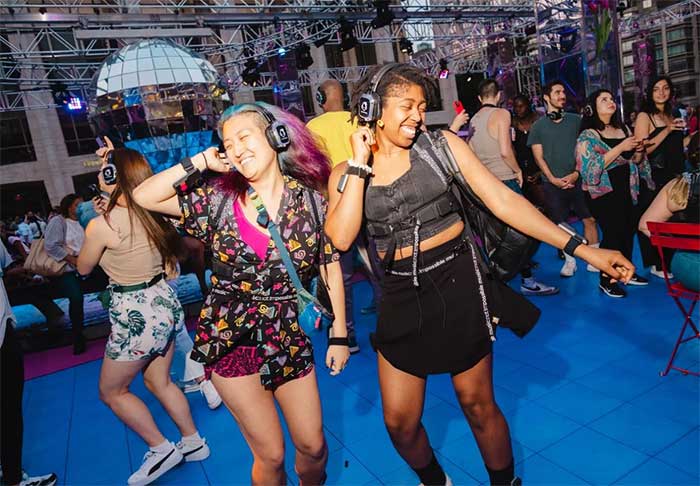The haptic suit enables individuals with hearing impairments to experience the sound of the violin resonating through a device attached to their chest, the sound of horns echoing from devices mounted on their shoulders, and solo chords emanating from devices attached to their wrists.
Now, people with hearing impairments have the opportunity to experience and enjoy music thanks to a wearable device equipped with vibration sensors.

Thanks to the haptic suit, hearing-impaired individuals can immerse themselves in music at the Silent Disco concert at Lincoln Center, New York City, on July 1. (Photo: NPR)
The device, known as the “haptic suit,” is equipped with 24 sensors, allowing the wearer to perceive sounds from various musical instruments at different intensities.
For example, users can feel the resonance of a violin through the device attached to their chest, the echo of a horn from the devices placed on their shoulders, and solo chords from the devices on their wrists.
At a recent classical concert held at Lincoln Center for the Performing Arts in Manhattan, New York, individuals with hearing impairments had the chance to wear this wireless device and experience 3D surround sound effects through vibrations.
Surround sound is a type of audio that emanates from multiple directions surrounding the listener, creating a more immersive auditory experience.
One of the attendees at the concert, Liza Fiol-Matta, was excited to experience this technology, even though she is not hearing-impaired.
Liza Fiol-Matta stated: “Music is my great love, and experiencing music perception in this way is an exciting idea for anyone, especially for those who are hearing impaired – it’s wonderful.”
According to Jay Zimmerman, a composer who lost some hearing after the 9/11 terrorist attacks, this device represents a new technology that creates a more dynamic and responsive music experience compared to previous devices.
Sharing his excitement about experiencing this promising technology, Zimmerman commented: “I was able to feel the gentle, flowing sounds of the violin. My entire body and mind felt so relaxed and pleasant that I could have cried. I could also feel the lively sound of the trombone so vividly that I almost burst out laughing.”
The designer of this device is sound expert Patrick Hanlon, who is also a co-founder of the music project “Music: Not Impossible.”
This project aims to apply technology to create musical sensations through vibrations on the user’s skin. The initiative focuses on serving individuals with disabilities, particularly those who are hearing impaired, with the goal of breaking down social barriers.


















































